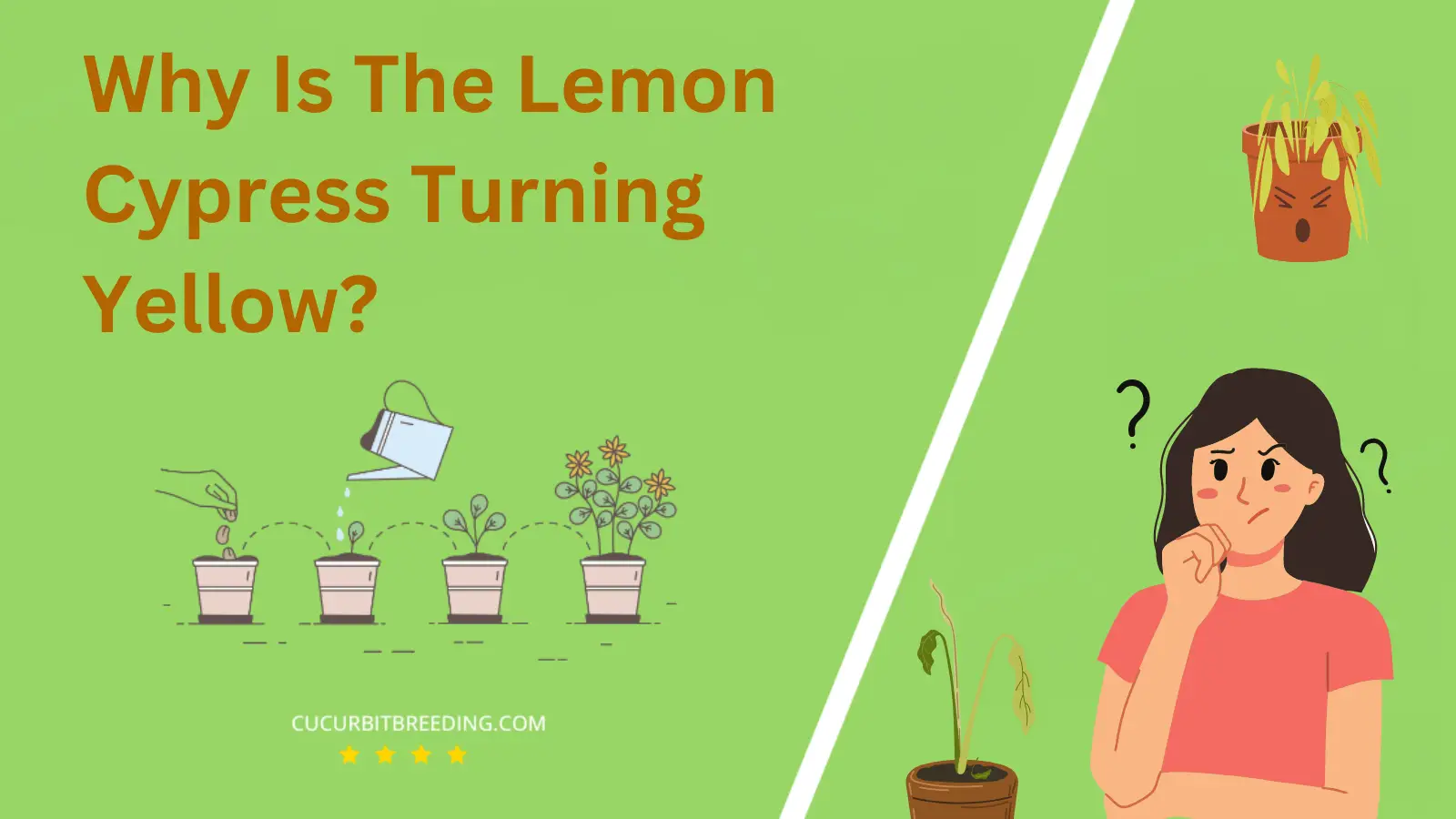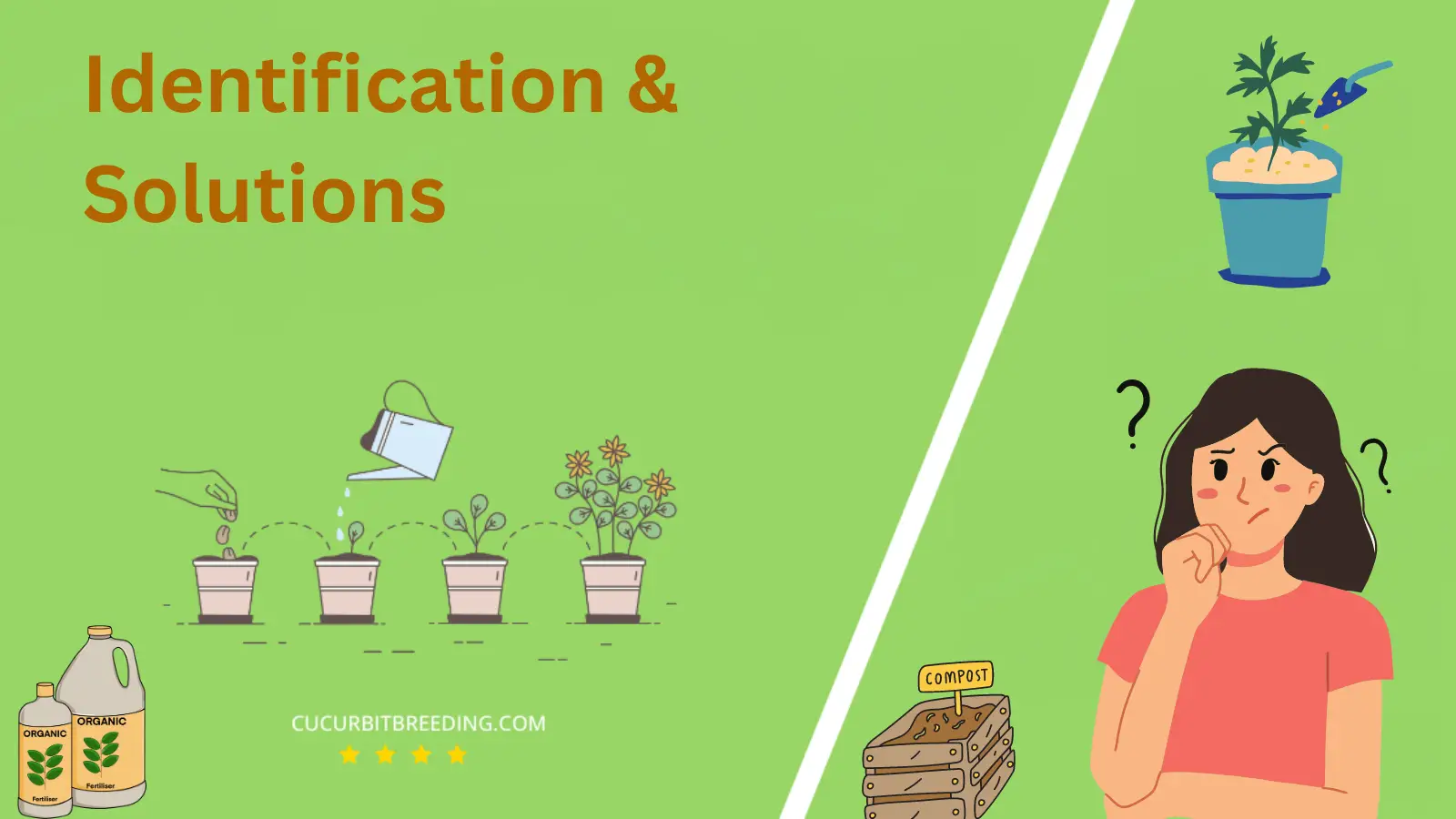
When your prized Lemon Cypress starts turning yellow, it’s only natural to feel a surge of panic. Is your evergreen gem calling for help? This can often trigger a sense of urgency and a quest to discover the underlying issues.
While yellowing may be a sign of distress, it’s crucial to remember that the causes can range from environmental factors to care practices. But what exactly could be causing such a drastic change in your beautiful Lemon Cypress?
Why Is The Lemon Cypress Turning Yellow?
1. Lack of sunlight
| Description | causes chlorophyll breakdown, leading to yellowing of leaves. |
|---|---|
| Solution | Increase sunlight exposure to prevent yellowing of lemon cypress. |
The lemon cypress (Cupressus macrocarpa ‘Goldcrest’) requires a good amount of sunlight to maintain its vibrant yellow-green colour. It should be exposed to at least six hours of direct sunlight per day. Lack of sunlight may cause the plant foliage to lose its vibrant colour and turn yellow.
Solution: To rectify this, consider moving the plant to a sunnier location. If it is indoors, place it near a window with plenty of light. If it is outdoors, plant or reposition it in an area that receives adequate sunlight. If natural light is insufficient, supplemental artificial lighting may be used to maintain optimal growth conditions. When the plant regains adequate light exposure, the yellowing should gradually subside and the foliage should return to its normal vibrancy. Regular pruning can also assist in ensuring that all parts of the plant have equal access to sunlight.
2. Overwatering
| Description | causes waterlogged roots, disrupting nutrient uptake and leading to yellowing of the leaves. |
|---|---|
| Solution | Reduce watering and ensure proper drainage to prevent root rot and restore the lemon cypress’s health. |
Overwatering and Its Effects
Overwatering is a common reason for yellowing foliage in a lemon cypress tree. Overwatering can cause waterlogged soil and poor oxygenation, leading to root rot. This reduces the roots’ ability to take up nutrients, causing the leaves to yellow.
Rectifying Overwatering
To rectify this situation, water the lemon cypress only when the top inch of the soil is dry. Through observing and understanding your tree’s water needs, you can prevent overwatering. Make sure to provide well-drained soil for optimal plant health.
The use of a container with proper drainage holes is also highly recommended. Consider repotting if the current pot or soil does not drain well.
Importance of Correct Watering
Correct watering is crucial to prevent yellowing leaves in your lemon cypress. Adequate watering, simultaneously avoiding waterlogging, ensures the plant has enough moisture for growth without compromising the roots’ health. Remember, slight dryness is less harmful than excessive watering for these trees.
3. Nutrient deficiency
| Description | The yellowing of the lemon cypress is due to a nutrient deficiency affecting its physiology. |
|---|---|
| Solution | Provide the lemon cypress with appropriate nutrients to address its yellowing. |
A lemon cypress turning yellow could be due to a nutrient deficiency. This occurs when the plant is not receiving the essential nutrients it needs to produce chlorophyll, which gives the plant its green color. Lack of nutrients also weakens the plant’s natural defenses and overall health, which may result in yellowing leaves or a general lackluster appearance.
Solutions: One way to address the nutrient deficiency is to administer a balanced, controlled-release fertilizer specifically designed for coniferous plants. This will provide the nutrients that the lemon cypress lacks and needs for healthy growth. Another important facet is ensuring the plant is being watered appropriately. Over-watering or under-watering can exacerbate nutrient deficiencies. Lastly, ensuring the lemon cypress is in the right environment for growth, including suitable temperature, lighting, and soil quality, is crucial for its health and vitality.
4. Soil pH imbalance
| Description | The yellowing of the lemon cypress is due to a nutrient deficiency affecting its physiology. |
|---|---|
| Solution | Provide the lemon cypress with appropriate nutrients to address its yellowing. |
An imbalance in soil pH can greatly affect your lemon cypress plant. The lemon cypress requires a slightly acidic soil condition for its proper growth. When the soil pH increases or becomes alkaline, this shrub can develop chlorosis, a condition which turns the leaves yellow due to inability in absorbing essential nutrients.
To correct the pH imbalance, you should first test your soil’s pH level that can be used as a baseline measurement. If the soil is too acidic, you can add lime to increase the alkalinity. However, if the soil is too alkaline, incorporating elements like sulfur or iron sulfate can help in lowering the pH level. Regular fertilization can help maintain the right nutrient balance in the soil.
Avoid excessive watering and ensure proper drainage to prevent waterlogged conditions which can also lead to shift in pH levels. Mulching with organic matter around the plant can help to maintain the right moisture level in the soil and reduce pH fluctuations. Always remember, restoring the right pH level ensures a healthier lemon cypress with vibrant green leaves.

5. Pests or diseases
| Description | Provide the lemon cypress with appropriate nutrients to address its yellowing. |
|---|---|
| Solution | Apply appropriate insecticide or fungicide to combat pests or diseases causing yellowing of lemon cypress. |
The lemon cypress tree could turn yellow as a result of pest infestation or disease. Commonly, pests like spider mites, aphids, and scale could cause discoloration by sucking the sap directly from the leaves and stems, causing them to turn yellow and potentially stunt the growth of the tree. Additionally, diseases such as root rot or canker diseases can cause yellowing. These diseases often occur due to overwatering or poor soil drainage, which leads to rotting roots or fungal growth.
There are several ways to address the problem of pest infestation or disease. For pests, natural insecticides or horticultural oils can be very effective if used properly. For diseases, it’s imperative to ascertain the exact cause before treatment. Overwatering, for instance, can be mitigated by reducing water intake and improving soil drainage. Fungal diseases can be treated with prescribed fungicides. Remember to always prune and dispose of any infected parts of the plant to prevent the spread of the disease.
6. Environmental stress (such as extreme temperatures or dry air)
| Description | can disrupt chlorophyll production, leading to yellowing of the leaves. |
|---|---|
| Solution | Provide consistent moisture and maintain a suitable temperature to prevent yellowing in the lemon cypress. |
The Lemon Cypress tree turning yellow could be due to environmental stress, specifically, extreme temperatures or dry air. These conditions may lead to a massive loss of water from the plant, causing the leaves to dehydrate and eventually turn yellow. In cold climates, the lack of humidity causes the plant’s cells to freeze, which results in the same symptoms.
To alleviate this problem, it’s crucial to provide the Cypress with optimal environmental conditions. This means maintaining a moderate room temperature, ideally between 60 and 75 degrees Fahrenheit, and keeping it away from both drafts and heat sources. To combat dry air, regular misting with water can be beneficial. Another effective solution is to place the pot on a tray filled with pebbles and water, ensuring the bottom of the pot does not touch the water. The evaporation will increase humidity around the plant. In extreme temperature conditions, it might be necessary to consider relocating the plant to a more suitable environment. Remember that healthy plant care routine is indispensable for the wellbeing of the Lemon Cypress.
7. Root rot
| Description | causes reduced water uptake, leading to chlorophyll breakdown and yellowing of the leaf. |
|---|---|
| Solution | Improve drainage, reduce watering, and treat with a fungicide to control root rot. |
The Lemon Cypress tree might be turning yellow due to inadequate amount of water. This plant is quite sensitive and requires a consistent watering regimen. Too much or too little water can result in the tree going into stress, which often manifests as yellowing of the leaves.
When the tree doesn’t get enough water, it may not be able to conduct photosynthesis efficiently. The lack of water causes the plant cells to shrink and photosynthetic pigments to reduce, causing the leaves to yellow. Similarly, overwatering can cause waterlogging in the root zone, which limits oxygen availability to roots, leading to a decline in health and yellowing of leaves.
To resolve this issue, you need to first ensure that the Lemon Cypress tree is in an environment with well-draining soil. If the soil remains too dense or soggy, consider adding more sand or fine gravel to augment drainage. When watering, ensure to moist the soil deeply and infrequently, rather than frequent shallow watering. This encourages the roots to grow deeper into the soil. After watering, let the soil dry before watering again to avoid waterlogging. A regular check on the tree’s water requirement depending on the seasonal change is also crucial.